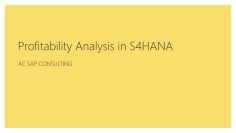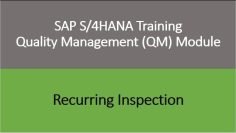This video tutorial provides a comprehensive guide on creating a new SAP movement type, along with a new account modification and determination. The tutorial begins with a brief overview of movement types in SAP and their importance in inventory management. It then delves into the process of creating a new movement type and assigning a new account modification.
- Introduction to Movement Types in SAP: Movement types in SAP are three-digit identification keys used to differentiate various goods movements. They play a crucial role in updating quantity fields, stock and consumption accounts, and controlling the screen of the MIGO transaction. Each movement type has a specific automatic set of screens, and they can also influence message determination.
- Creating a New Movement Type: The tutorial demonstrates the creation of a new movement type by copying an existing one. The example used in the video involves creating a new movement type for scrapping, based on the standard movement type 551. The new movement type is named ‘951’. The control reason for this movement type is set to ‘required’.
- Creating a New Account Modification: The video then proceeds to create a new account modification. The account grouping for movement type 951 is changed from the standard ‘VNG’ to ‘ZNG’. This new account modification is then used to make the account determination for the new movement type.
- Account Determination for the New Movement Type: The tutorial demonstrates the account determination process for the new movement type. The account determination is made for the new account modification ‘ZNG’ for valuation class 3000. The accounting for scrapping is set to an account ending with …20, different from the standard account ending with …01.
- Testing the New Movement Type: The video concludes with a demonstration of the new movement type in action. The tutorial shows the scrapping of an ‘external’ batch using the standard movement type 551 and an ‘internal’ batch using the new movement type 951. The accounting documents generated from these transactions confirm the different G/L accounts used for the scrapping of the ‘external’ and ‘internal’ batches.
Transaction Codes Mentioned:
- OMJJ: Transaction for movement type
- MIGO: Transaction for goods movement
Key Takeaways:
- Movement types in SAP are crucial for differentiating various goods movements and controlling inventory management.
- New movement types can be created by copying existing ones and modifying the control parameters as needed.
- Account modifications can be created and assigned to new movement types to control the account determination process.
- The new movement type and account modification can be tested by performing relevant transactions and checking the accounting documents generated.
























